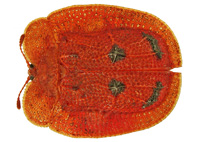Abstract
It is well documented in anurans the cryptic condition of many species complexes involving polyploids. In these complexes the character that clearly differentiates them is the number of chromosome complements. The blood cells of amphibians conserve their nucleus, and so the erythrocyte size is correlated with the DNA content. We analyzed two cryptic-polyploid complexes occurring in the center of Argentina: Odontophrynus cordobae (2n)/O. americanus (4n) and Pleurodema kriegi (4n)/P. cordobae (8n). Our aim was evaluate the efficiency in the utilization of nuclear area with respect to cellular area of the erythrocytes to define the limits values for the identification of cryptic-polyploid species. We studied 110 individuals of Pleurodema and 116 individuals of Odontoprhynus. For each individual, we measured the cellular and nuclear length (L) and width (A) of 40 erythrocytes (Area= L*A*π/4) and boundary values were calculated using distribution curves. In both complexes studied, the erythrometric parameters showed significant differences between related species. Moreover, in both complexes the nuclear area was more efficient for identifying the species (Pleurodema: 34.39 μm² (probability=99.96%) and Odontophrynus: 24.02 μm² (99.075%)) than the cell area (Pleurodema: 273.08 μm² (97.55%) y Odontophrynus: 197.69 μm² (97.94%)). Greater efficiency found using nuclear area is novel and significant because most studies use only the cell area to differentiate polyploid complexes.

